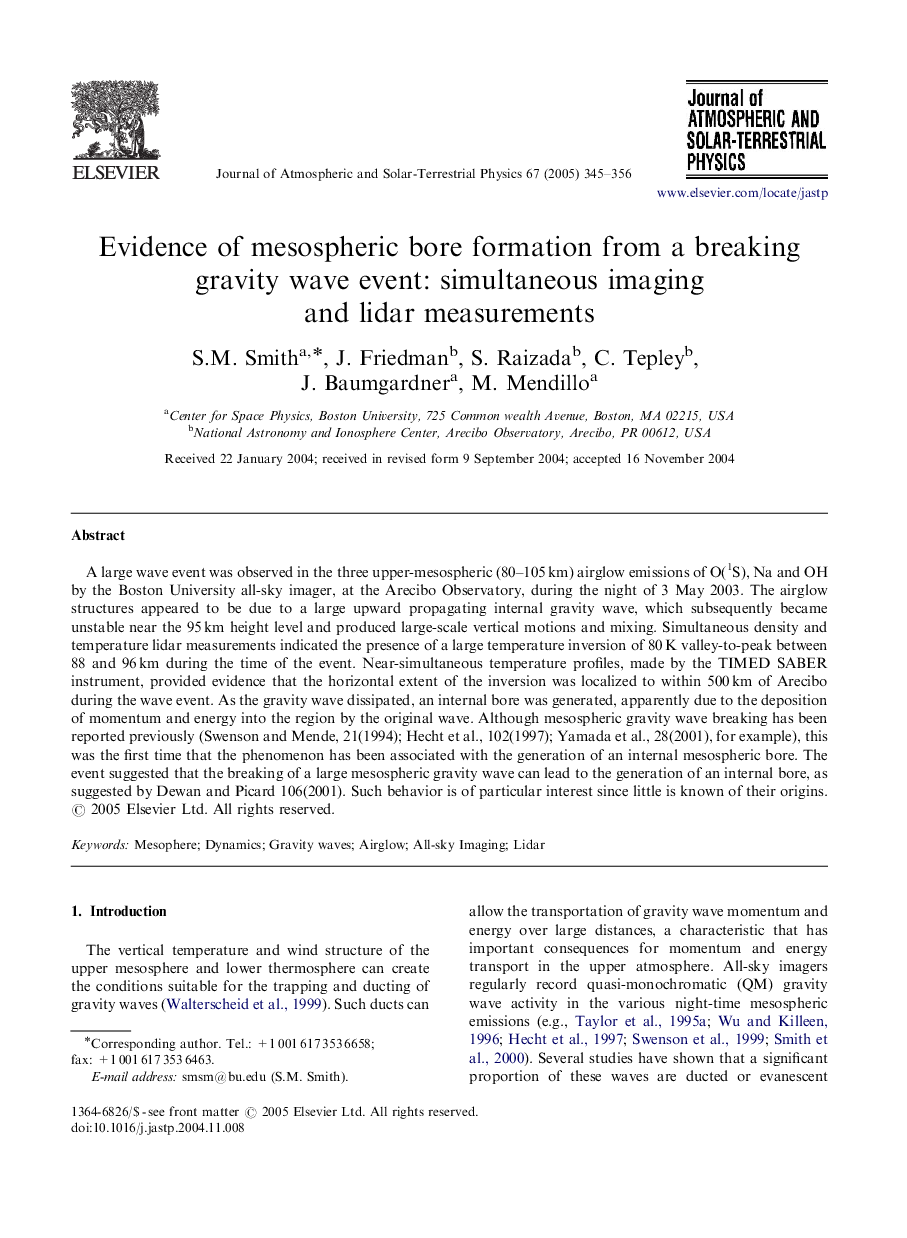| Article ID | Journal | Published Year | Pages | File Type |
|---|---|---|---|---|
| 10704208 | Journal of Atmospheric and Solar-Terrestrial Physics | 2005 | 12 Pages |
Abstract
A large wave event was observed in the three upper-mesospheric (80-105Â km) airglow emissions of O(1S), Na and OH by the Boston University all-sky imager, at the Arecibo Observatory, during the night of 3 May 2003. The airglow structures appeared to be due to a large upward propagating internal gravity wave, which subsequently became unstable near the 95Â km height level and produced large-scale vertical motions and mixing. Simultaneous density and temperature lidar measurements indicated the presence of a large temperature inversion of 80Â K valley-to-peak between 88 and 96Â km during the time of the event. Near-simultaneous temperature profiles, made by the TIMED SABER instrument, provided evidence that the horizontal extent of the inversion was localized to within 500Â km of Arecibo during the wave event. As the gravity wave dissipated, an internal bore was generated, apparently due to the deposition of momentum and energy into the region by the original wave. Although mesospheric gravity wave breaking has been reported previously (Swenson and Mende, 21(1994); Hecht et al., 102(1997); Yamada et al., 28(2001), for example), this was the first time that the phenomenon has been associated with the generation of an internal mesospheric bore. The event suggested that the breaking of a large mesospheric gravity wave can lead to the generation of an internal bore, as suggested by Dewan and Picard 106(2001). Such behavior is of particular interest since little is known of their origins.
Keywords
Related Topics
Physical Sciences and Engineering
Earth and Planetary Sciences
Geophysics
Authors
S.M. Smith, J. Friedman, S. Raizada, C. Tepley, J. Baumgardner, M. Mendillo,
